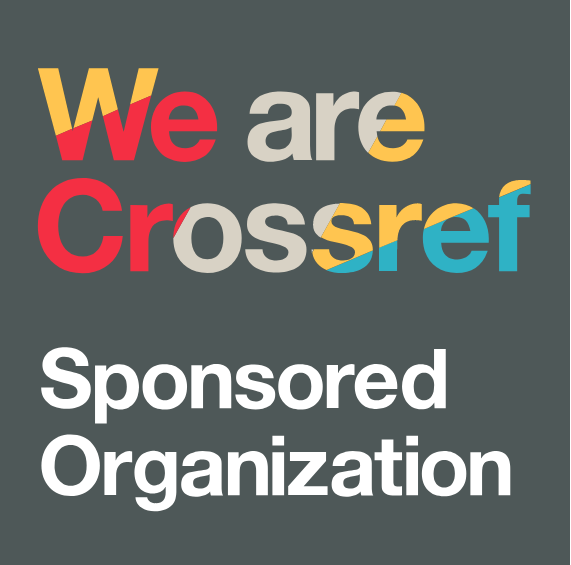The Influence of Smart Learning Environment, e-Learning Platform, and Wearable Technology on Students' Microbiology Learning Independence
DOI:
https://doi.org/10.38035/sijet.v2i3.181Keywords:
Smart Learning Environment, E-learning, Wearable Technology, Learning Independence, Microbiology, Educational TechnologyAbstract
The development of digital technology has brought innovations in higher education systems, including in microbiology education that demands conceptual understanding and independent skills. This article aims to systematically examine the influence of Smart Learning Environment (SLE), e-learning platforms, and wearable technologies on improving the learning independence of microbiology students. Through a literature study of various national and international scientific articles, it was found that the three technologies complement each other in creating an adaptive, interactive, and personalized learning ecosystem. SLE provides a data-based and artificial intelligence-based learning environment, e-learning platforms provide flexibility of access and multimedia content, while wearable technologies support real-time monitoring and feedback on learning. These findings provide a strong conceptual foundation for developing a digital learning model that encourages student learning autonomy in the field of microbiology. This article also formulates a hypothetical direction for further research based on educational technology in the life sciences.
References
Al-Fraihat, D., Joy, M., & Sinclair, J. (2020). The role of e-learning in education: A literature review. Education and Information Technologies, 25(3), 803-823. https://doi.org/10.1007/s10639-019-10339-7
Ali, H., & Limakrisna, N. (2013). Research Methodology (Practical Guidelines for Solving Business Problems, Writing Theses (Doctoral dissertations, Theses, and Dissertations. In In Deeppublish: Yogyakarta.
Alshammari, M., Alotaibi, F., & Alghamdi, A. (2021). The impact of e-learning platforms on higher education students' performance. Journal of Education and Learning, 10(2), 87-98. https://doi.org/10.5539/jel.v10n2p87
Anderson, T. (2011). The theory and practice of online learning. Athabasca University Press.
Bacca, J., Baldiris, S., Graf, S., & Väljamäe, L. (2014). Augmented reality trends in education: A systematic review of research and applications. Educational Technology & Society, 17(4), 133-149.
Bi, S., & Wu, Z. (2019). Investigating the effect of smart learning environments on students' learning performance and motivation. Computers & Education, 135, 106-119. https://doi.org/10.1016/j.compedu.2019.02.014
Gros, B. (2016). Smart learning environments: Adaptive, personalized, and responsive to students' needs. Springer.
Huang, R., Spector, J. M., & Yang, J. (2020). Educational technology and the role of learning environments in enhancing learning autonomy and motivation. Educational Technology Research and Development, 68(6), 2783-2802. https://doi.org/10.1007/s11423-020-09771-w
Hwang, G. J., Chen, C. H., & Spector, J. M. (2018). The design and implementation of a smart learning environment. Educational Technology & Society, 21(2), 1-14.
Kosmadoudi, G., Fountas, G., & Vassilakis, C. (2013). The impact of wearable devices on learning in higher education: A review of literature. International Journal of Educational Technology in Higher Education, 10(2), 1-14. https://doi.org/10.1186/s41239-019-0172-2
Limniou, M., & Smith, M. (2014). Interactive learning with visualizations: Enhancing students' learning in science and engineering. Computer Applications in Engineering Education, 22(2), 267-278. https://doi.org/10.1002/cae.21653
Martín-Gutiérrez, J., Verdejo, M. F., González, M., & Herrera, M. (2017). Augmented reality to promote active learning in engineering education. Computers & Education, 113, 56-69.
Papamitsiou, Z., & Economides, A. A. (2014). Learning analytics and educational data mining in practice: A systematic literature review. Educational Technology & Society, 17(4), 49-64.
Rajab, H., Monfared, M., & Sadeghi, M. (2020). Using e-learning for microbiology education: A systematic review. Journal of Educational Technology & Society, 23(2), 101-112.
Sun, P., & Rueda, R. (2012). The effects of multimedia on students' learning: A meta-analysis. Computers in Human Behavior, 28(2), 1361-1370. https://doi.org/10.1016/j.chb.2011.10.018
Sun, P., Tsai, R., Finger, G., Chen, Y., & Yeh, D. (2008). What drives a successful e-Learning? An empirical investigation of the critical factors influencing learner satisfaction. Computers & Education, 50(4), 1183-1202. https://doi.org/10.1016/j.compedu.2006.11.007
Uskov, V. L., Bakken, M. L., & Pandey, D. (2015). Smart learning environments for higher education: A comprehensive review. Smart Learning Environments, 2(1), 1-16. https://doi.org/10.1186/s40561-015-0015-2
Wu, S., Yeh, Y., & Hsieh, Y. (2020). The effectiveness of wearable devices for enhancing self-regulated learning in higher education: A meta-analysis. Computers & Education, 149, 103795. https://doi.org/10.1016/j.compedu.2020.103795
Yin, H., Zhang, L., & Zhang, Z. (2021). Leveraging big data for personalized learning in higher education: A review of the literature. Educational Technology Research and Development, 69(1), 25-40. https://doi.org/10.1007/s11423-020-09879-2
Zhang, D., Zhao, J., & Wang, L. (2021). Wearable technology in higher education: Impact on student learning and engagement. Journal of Educational Computing Research, 59(7), 1224-1242. https://doi.org/10.1177/0735633121994379
Zimmerman, B. J. (2002). Becoming a self-regulated learner: An overview. Theory into Practice, 41(2), 64-70. https://doi.org/10.1207/s15430421tip4102_2
Downloads
Published
How to Cite
Issue
Section
License
Copyright (c) 2025 Yumna Syaza Kani Putri, Yorasakhi Ananta

This work is licensed under a Creative Commons Attribution 4.0 International License.
Copyright :
Authors who publish their manuscripts in this journal agree to the following conditions:
- Copyright in each article belongs to the author.
- The author acknowledges that the Siber International Journal of Education Technology (SIJET) has the right to be the first to publish under a Creative Commons Attribution 4.0 International license (Attribution 4.0 International CC BY 4.0).
- Authors can submit articles separately, arrange the non-exclusive distribution of manuscripts that have been published in this journal to other versions (for example, sent to the author's institutional repository, publication in a book, etc.), by acknowledging that the manuscript has been published for the first time at Siber International Journal of Education Technology (SIJET).























